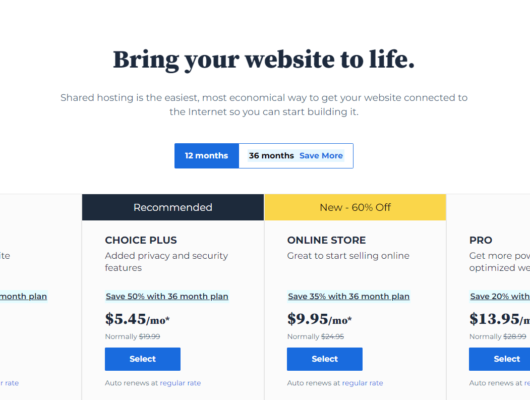Imagine launching your website only to find it down more often than it’s up.
That’s where a shared hosting uptime guarantee comes in. It’s not just a number—it’s a promise that your website will stay online and perform well, even with the shared resources of multiple sites.
In this guide, we’ll demystify uptime guarantees, why they’re crucial to your website’s success, and how to ensure your hosting provider delivers on their promises.
Ready to keep your site running smoothly? Let’s dive in!
What is Uptime Guarantee?
An uptime guarantee is a commitment from a hosting provider that ensures your website will remain online and accessible for a certain percentage of time.
For example, a 99.9% uptime guarantee means that your website can experience up to 8.76 hours of downtime per year, which is the maximum allowable downtime before the hosting provider’s service level agreement (SLA) is violated.
In shared hosting, where multiple websites share the same server, downtime can occur due to server overloads or maintenance issues.
However, reputable hosting providers include uptime guarantees to minimize the risks of downtime and keep your website running smoothly.
Why is Uptime Guarantee Important?
For any website, especially business websites, uptime is crucial for the following reasons:
- User Experience: When your website is down, visitors can’t access your content or services. This leads to frustration and can result in a loss of visitors, customers, or potential clients.
- SEO Impact: Search engines like Google consider website availability as a ranking factor. Frequent downtime can negatively affect your website’s search engine ranking, making it harder for users to find you.
- Brand Reputation: Consistent downtime can tarnish your brand’s reputation. Customers and users expect websites to be available at all times, and downtime can create doubts about the reliability of your business.
- Sales and Revenue: For e-commerce websites, downtime directly translates to lost sales and revenue. The longer your website is unavailable, the more potential sales you lose.
How to Evaluate Uptime Guarantees in Shared Hosting
Not all shared hosting providers offer the same level of uptime guarantee, so it’s important to evaluate different options based on the following criteria:
1. Uptime Percentage
The most common uptime guarantees for shared hosting are:
- 99.9% Uptime: This is considered the industry standard for most hosting providers. It means that your website could be down for a maximum of 8.76 hours per year.
- 99.95% Uptime: Some hosting providers offer a slightly higher uptime guarantee, which reduces the allowable downtime to just 4.38 hours per year.
- 99.99% Uptime: The highest level of uptime guarantee, typically offered by top-tier hosting providers. It ensures less than 1 hour of downtime per year.
When choosing a hosting provider, make sure you understand what percentage of uptime is guaranteed and compare it with other providers in the market.
2. Service Level Agreement (SLA)
A Service Level Agreement (SLA) outlines the terms and conditions of the uptime guarantee.
The SLA will specify the compensation you’re entitled to if the provider fails to meet the uptime commitment. Common compensation includes:
- Service Credits: Hosting providers may offer service credits, which can be used to reduce your next bill, based on the amount of downtime experienced.
- Refunds: Some hosting providers offer partial or full refunds if their uptime guarantee is not met for an extended period.
Before signing up for any shared hosting plan, review the SLA to understand what you’re entitled to in case of downtime.
3. Server Reliability and Maintenance
In addition to the uptime guarantee, consider how the hosting provider manages its servers.
A hosting provider that offers a high uptime guarantee but performs frequent maintenance or fails to address issues promptly can still result in frequent downtime.
- Regular Server Maintenance: Ensure that the hosting provider performs regular updates, backups, and proactive maintenance to minimize any potential service disruptions.
- Monitoring and Support: Check whether the hosting provider offers 24/7 server monitoring and support to resolve issues quickly and reduce the risk of downtime.
How to Minimize Downtime in Shared Hosting
Even with a high uptime guarantee, downtime can still occur from time to time.
Here are a few steps you can take to minimize downtime on shared hosting:
1. Choose a Reputable Hosting Provider
Select a hosting provider with a strong reputation for reliability. Research customer reviews, check uptime reports, and verify the provider’s support services before making a decision.
Providers with a proven track record are less likely to experience frequent downtime.
2. Opt for Regular Backups
Having regular backups of your website is crucial in case of any server failure or technical issues.
Most shared hosting plans offer automatic backups, but it’s always a good idea to set up manual backups as an additional precaution.
3. Monitor Your Website’s Uptime
Use website monitoring tools to track your website’s uptime. These tools can alert you to any issues with your website’s availability, allowing you to quickly address any problems before they affect your visitors.
4. Avoid Overloading Your Hosting Plan
On shared hosting, resources are shared among multiple websites, so it’s essential to avoid resource hogging.
If your website exceeds its allocated resources (such as CPU or bandwidth), it can lead to slower speeds or downtime for your website.
Optimize your website and avoid using too many plugins or heavy scripts.
Read more about Choose Shared Hosting
Conclusion
A solid uptime guarantee is an essential factor when choosing a shared hosting provider.
It provides you with assurance that your website will be available to visitors most of the time, which is critical for maintaining a positive user experience, SEO rankings, and sales.
While most shared hosting providers offer a 99.9% uptime guarantee, make sure to carefully review the SLA, consider server reliability, and choose a provider with excellent customer support to minimize downtime.
Additionally, take steps to monitor your website’s uptime and perform regular backups to safeguard your website’s availability.
With the right hosting provider and proactive steps, you can ensure your website stays up and running smoothly, offering a great experience for your visitors.






